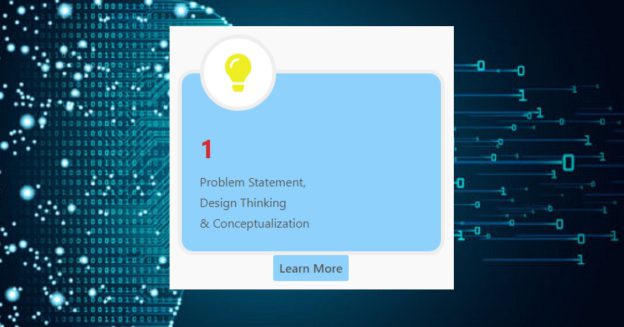Project-Course Description:
Summary: This Project-Course SR-ST1-M1 (SR, Secondary Research; ST1, Stage 1; M1, Module 1) in the 1st of several modules of Stage 1 or a 3-Stage Experiential Collaboratory Project-Course Series/Pathway Illustrated Below.
1
Problem Statement,
Design Thinking
& Conceptualization
2
Innovation, Research
& Development
(IR&D)
3
Solution Launch,
M&E*, CQI^,
& Scale-up
*M&E: Monitoring & Evaluation; ^CQI: Continuous Quality Improvement
Summary (continued): More specifically, the ST1/Stage 1 experiential collaboratory project-course guides program participants progressively through project initiation steps beginning with framing the problem of interest as a problem statement, undertaking design thinking & project conceptualization culminating in generation of a conceptual abstract summarizing project title, objectives, background & rationale, methods (epidemiologic design framework and analyses) and expected real world applicability of the anticipated final output (results/solution). Through this progressive approach culminating in a conceptual abstract (<1 page), consistency and logical connections are achieved across the key four fundamental components of underpinning the investigation/research or demonstration project, i.e. the title, problem statement, rationale/purpose, research question &/or hypothesis.
6-8 wks
4 Hrs/Wk
Self-paced
Own pace
Interactive
Collaborative
Next Start
Anytime
What will Participants Collaborate on, Learn & Do?
- Articulate an introduction of the topic/problem of interest including the background, rationale and significance thereof (i.e. ‘why’ this issue matters & must be addressed) culminating in a problem statement and research question/hypothesis, and generate the following milestone outputs:
- Identify a topic/problem of interest in general terms, and after completing the activities below, refine that into a structured project title;
- A brief case study &/or situational analysis incorporating a literature review of the state of the art existing/background knowledge on the problem of interest, culminating in a problem statement;
- A problem statement, research question &/or hypothesis statement pertaining to the problem which needs to be addressed; and
- A structured project title derived from refinement of the above elements of the introduction of the problem topic.
- Describe the investigational/research methods to be utilized to answer the research question/investigate the hypothesis (i.e. ‘what’ will be done to investigate/study/research/address the problem) including identifying an appropriate epidemiologic design framework for the investigation, research/study &/or solution to address the identified problem, research question, &/or hypothesis; and
- Develop a conceptual abstract (summary) briefly consolidating key aspects of each of the above milestone outputs to describe the project, i.e. objectives, background & rationale, methods (incl. epidemiologic design framework and analyses) and expected real world applicability of the anticipated final output (findings/results/solution). The conceptual abstract will later be scaled up to a project plan/protocol &/or incl. a prototype if development of a device/innovation (e.g. an app) is proposed.
- Collaborate with colleagues in conducting peer-review of each other’s successive milestone outputs referenced above (italicized) as they are progressively generated, specifically selected subsets of outputs including a case study, literature review, problem statement, research question &/or related hypothesis, and a conceptual abstract culminating in a consolidated presentation for an online colloquium &/or conference webinar (oral or poster), and journal publication of selected peer-reviewed outputs deemed appropriate at this stage;
